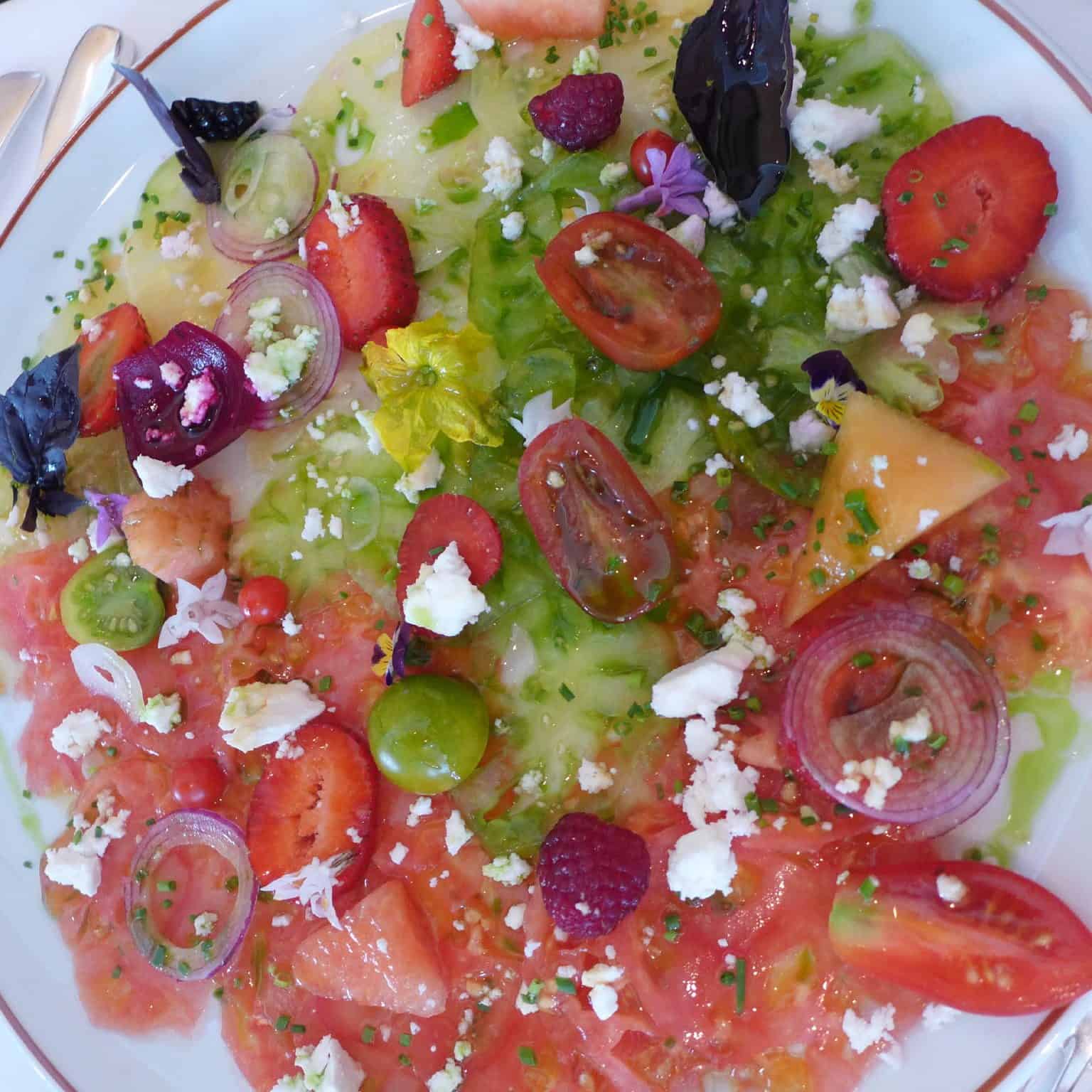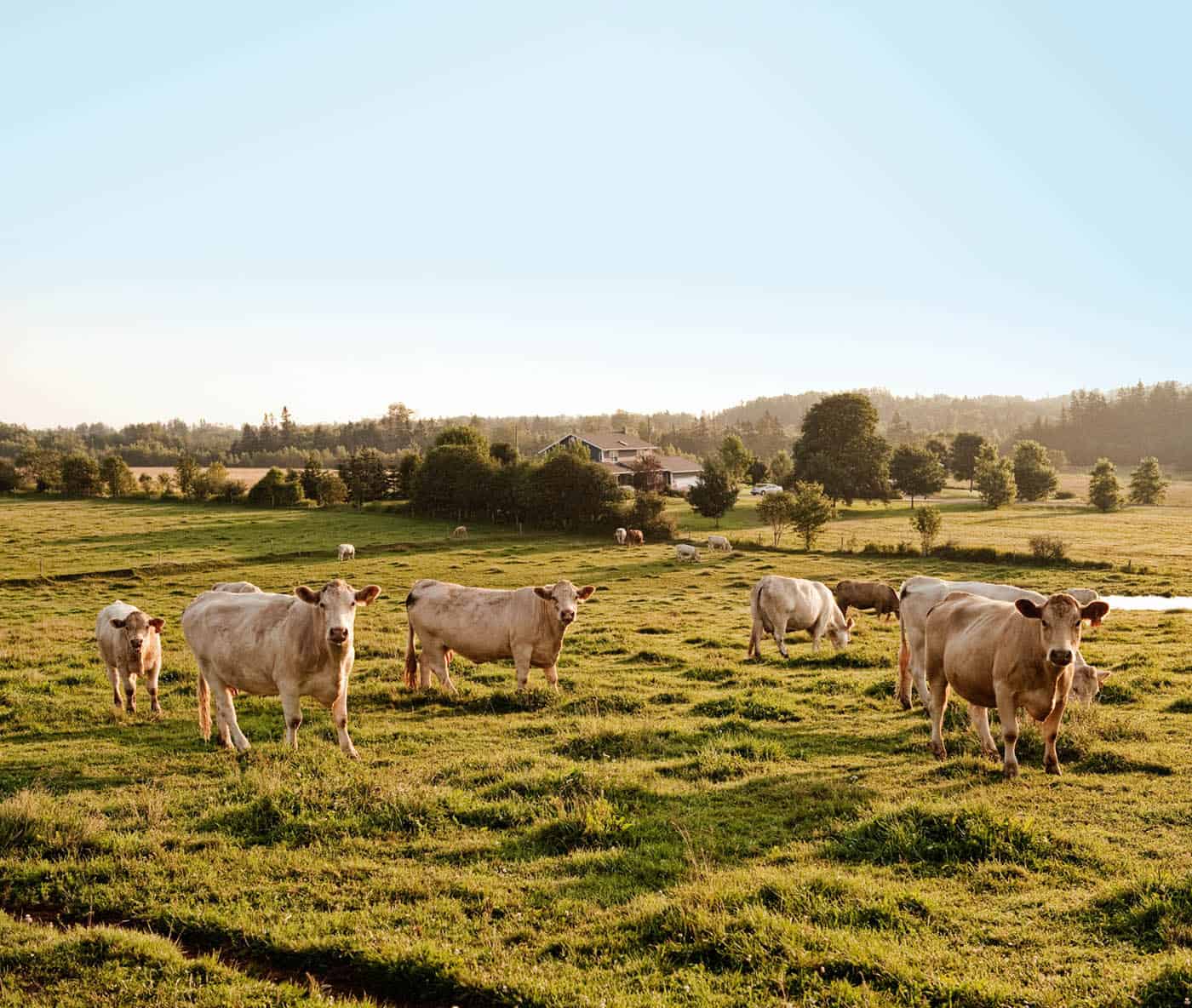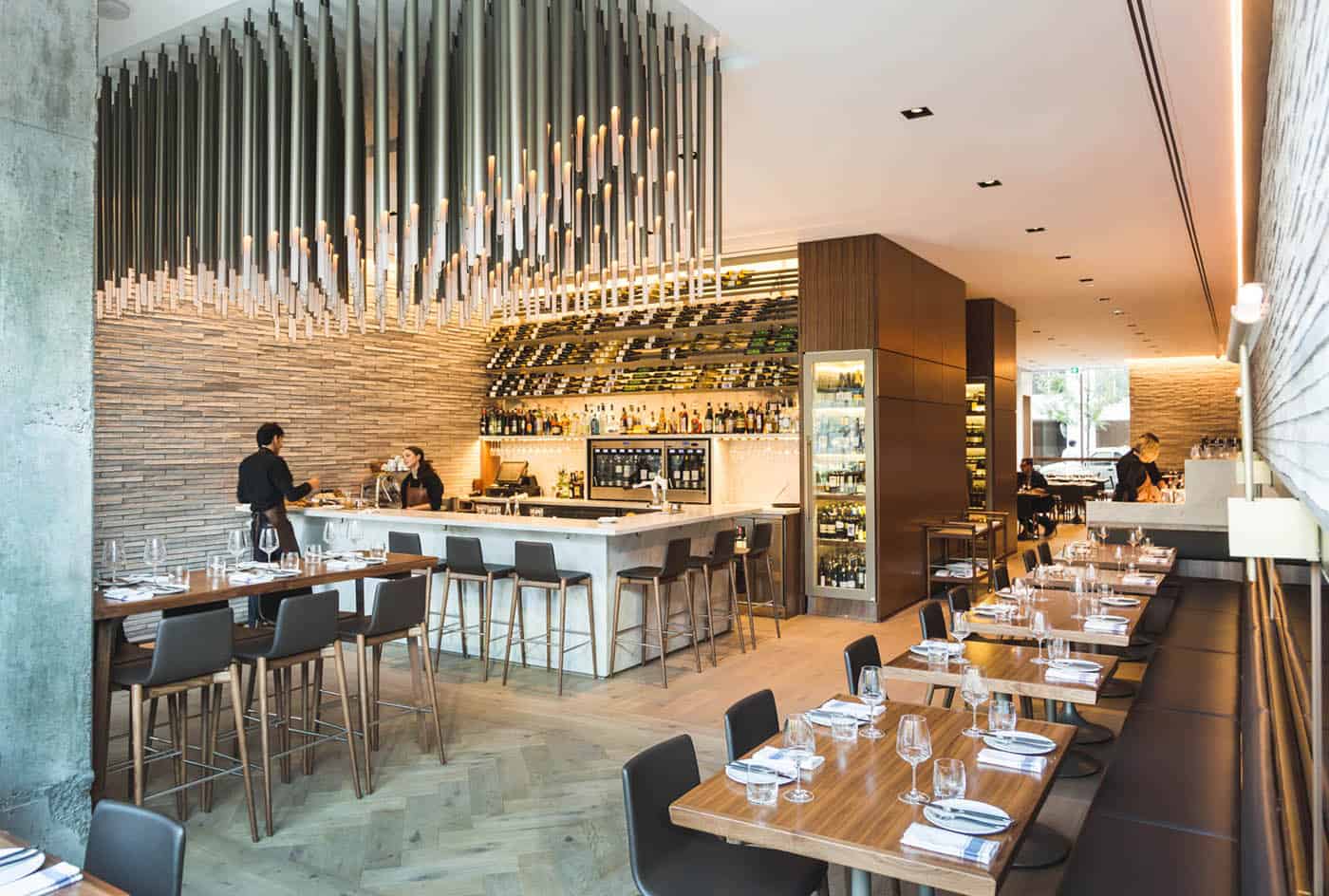
When C100B editor Jacob Richler dropped his daughter off at university in Reims, he opted to make the trip deliciously memorable.
Words and pictures by JACOB RICHLER
This summer my 17-year-old daughter, Simone, was admitted to Université Sciences Po, in Reims, France. That’s right, Reims, the capital of Champagne. Well, someone had to take her there—and I was at the front of the queue. I was quickly joined there by my wife, Lisa. And then, no sooner did I mention the excursion to my mother, Florence (“Reims? My mecca…”) than she was in on it, too. Suddenly booking tables for four. Very good ones, too. Some highlights follow.
 Lisa and my mother touring the castle ruins at Château de Fère
Lisa and my mother touring the castle ruins at Château de FèrePART 1: PARIS
DAY 1: LUNCH
Where to take my daughter for her historic first meal in Paris was a surprisingly easy call. On my first trip there, with my parents, I was whisked all but straight from de Gaulle to the venerable Brasserie Lipp, in Saint-Germain-des-Prés. And there for me began two enduring love affairs (one with Paris, another with choucroute garni). So, 30 years on there was nothing for it but to try for a repeat, and head straight for the same old brasserie. And I mean the same. In a changing world, Lipp is a constant. As we settled onto our banquette, a waiter brushed past bearing plates of cervelas rémoulade—on the menu here since 1880, and still looking just like Hemingway described it in A Moveable Feast (“…a heavy, wide frankfurter split in two, and covered with a special mustard sauce.”) Despite the 25°C heat, my 87-year-old mother summoned her inner Alsatian and managed a choucroute garni (sliced ham, ham hock, bacon, sausages, etc.) all by herself. I opted for choucroute de la mer—my sauerkraut loaded with salmon, haddock and smoked haddock (an inauthentic representation of the fish of landlocked Alsace, but delicious all the same). My wife settled on the one light, weather-appropriate dish on the menu (sole meunière). And for her first French meal my daughter opted for the familiar (duck confit). Then it was time for île flottante, profiteroles, espresso, cognac, a short walkabout through some centuries-old local churches, and a long afternoon nap.
Brasserie Lipp, 151 boulevard Saint-Germain,
75006 Paris, brasserielipp.fr
DAY 1, DINNER
A sentimental day demanded a familiar location for dinner, too, and so for that I chose another of my parents’ local favourites. Some context: my father, Mordecai, knew French cooking was the best. But he had little appreciation for haute cuisine and no patience whatsoever for its rituals and pretentions; his passionate enthusiasm focussed exclusively on la cuisine bourgeoise (think coq au vin, cassoulet, entrecôte bordelaise, etc). Restaurant Allard has forged its reputation on just that since 1932. And while some indifferent years followed the Allard family’s departure in 1995, I was very keen to see how things were running in the new era—since Alain Ducasse bought the place four years ago. First, I can happily report that the master chef has had the good sense to not change a whit of Allard’s charming Old World décor, nor the concept. In other good news, the master chef’s healthy respect for tradition extends to appointing a female chef (Fanny Herpin) to run his kitchen, maintaining an all-too-rare convention that at Allard dates to inception (when the kitchen was helmed by Marthe Allard, and then by her legendary daughter-in-law, Françoise). More important still, chef Herpin is here by merit alone; she and her team cook beautifully. We nibbled first on perfect pâté de campagne on thin toast along with the refreshing counterpoint of a simple cucumber salad. Then, working through a sublime Meursault (2013, Sous la Velle, Anne Boisson), we tackled luscious escargots in their shells, the best tomatoes of the season, and a salad of crisp lettuce and homard bleu with buttery croutons. To follow, a magnificently large, plump, firm and pristine Dover sole for two, façon meunière (all it needed), poached turbot with beurre blanc, and succulent roast lamb. To finish, be advised that Ducasse has slipped his signature rum baba onto the bistro menu. Order it—or live in regret ever after.
Restaurant Allard, 41 rue Saint-André des Arts,
75006 Paris, restaurant-allard.fr
DAY 2, LUNCH
The plan was to take everyone to the Rodin Museum, and with a view to maximizing our time there I selflessly volunteered to ease back on the heavy dining schedule and instead have a quick bite at a bistro nearby. But guess what happens when you google “restaurants near Rodin Museum”? The closest place is l’Arpège, which has held three Michelin stars since 1996 and whose vegetable-toting chef, Alain Passard, won the 2017 Lifetime Achievement Award from the World’s 50 Best Restaurants. What could we do? Well, now we know what a tomato salad looks like when it costs $125 (stunning, go figure). We were moved, too, by the colourful array of sensationally delicate vegetable raviolis adrift in lavender-accented consommé. The beet tartare (the one that started it all) was good, and the vegetarian “sushi” extremely pretty if a bit silly (what did all that rice add to the culinary equation, exactly?). Fortunately, I had been reliably advised to not stay the course with tourist driven vegetarianism here, and instead sample Passard’s less trendy work with meat and fish. So, next I was next tucking into the single best, most richly favoured, tender and luscious sweetbread I had ever eaten anywhere. Even better, maybe, was the roast split lobster, doused with a foamed reduction of vin jaune infused with mushroom. Was that accent in the base of the sauce, I wondered, or did its essence bleed in from the mound of black trumpets at one side of the plate? I asked the sommelier and she said she’d ask the chef but never returned. So, I asked a waiter and he said he’d ask the chef but never returned. Then, after a glorious soufflé, we told another waiter that we were pressed for time but would manage a quick espresso before we left. And then watched them get cold on a tray on the counter by the door, while the waiter chatted with a friend outside on the street. What can I say? Lunch was only €1300.
L’Arpège, 57 rue de Bourgogne,
75007 Paris, alain-passard.com
 This is what tomato salad looks like when it costs $125 (at L'Arpège, Paris)
This is what tomato salad looks like when it costs $125 (at L'Arpège, Paris) Lobster with foamed vin jaune reduction at L'Arpège
Lobster with foamed vin jaune reduction at L'Arpège Beet tartare at L'Arpège
Beet tartare at L'ArpègePART 2: REIMS
DAY 3, LUNCH
A harrowing drive through torrential rains on the A4 from Paris had us running late, wet and thirsty. We hardly had time for dropping off my daughter at her new campus—never mind lunch—if we were to make Louis Roederer in time for the 2 p.m. tour I had arranged from Toronto. No matter. The fizz was what brought us here, and liquid gold would be sustenance enough. But before quenching our thirst, a tour. This began as I like them best—with something I did not previously know. In this instance, the news was revealed in the Roederer entrance corridor, in an atrium with a domed ceiling studded with circles of light that looked to me an awful lot like those signature thick bases of Cristal bottles, and where a bust of Tsar Alexander II stood on a pedestal.
“Cristal was created for the Tsar in 1876,” explained our gracious and charming host, Roederer hospitality manager Eve-Claire Mathieu. Indeed, Cristal’s unique signature bottle—punt-free, and clear—was created out of Tsarist considerations (specifically, to facilitate spotting poison in a bottle).“We use the same formula today.
 Tsar Nicholas II, who spent more on Christal than oligarchs and hip-hop stars combined
Tsar Nicholas II, who spent more on Christal than oligarchs and hip-hop stars combinedWell, same old-vine chardonnay and pinot nor from the same chalky soils in Roederer’s own vineyards— but fortunately, with a whole lot less sugar added than what Russians favoured back in the Tsar’s day. From there, onwards, down a floor to see the huge metal vats and the bottling facility, and down another level, into more historic territory, where the chalky walls were darkened with black mould, and my mother kept loitering suspiciously by a wall against which 34,668 bottles of champers were stacked without racks, neck to neck, floor to ceiling. Next, down another level, into the cellars, where rows of full riddling racks were lined up as far as one could see, receding unrelentingly into the distant darkness, as if in a dream. Then, at last, we had time for tasting. Do Roederer Brut Premier and Rosé Vintage and Cristal taste better now that I’ve been there and can match place to taste? Maybe. But they tasted pretty damn good before, too…
Louis Roederer Champagne, 21 boulevard Lundy,
51100 Reims, louis-roederer.com
 The cellars at Roederer
The cellars at Roederer Eve-Claire Mathieu explains disgorgement
Eve-Claire Mathieu explains disgorgement 34,668 bottles of Roederer
34,668 bottles of RoedererDAY 4, LUNCH
Here at last was a place at which I could eat every day of the week. The daily catch, fanned out for everyone’s inspection over a bed of crushed ice, spanned line-caught wild sea bass, Dover sole, turbot, skate, tuna, swordfish, Saint-Pierre and a dozen other fish besides, along with a broad variety of crab, clams, mussels, shrimp, langoustines and blue lobster. Each was prepared simply— grilled, poêlé, en papilotte. No flash, no fuss, just fresh (and almost exclusively wild) fish at its pristine best. We were on the streetside terrace, getting started on a huge platter of coquillages, when a stranger, chatting with our waiter, introduced himself—as local winemaker Jean-Claude Fournon.
“There are three Perriers in Champagne,” M. Fournon explained, “Laurent-Perrier, Perrier-Jouët, and the little one, me—Joseph Perrier.”
Then he bought us a bottle to try (Blanc de Noirs, 2008, Brut Nature) and it was exceptional. And that—not l’Arpège— is my idea of French hospitality. The swordfish meanwhile was the freshest and most succulent I’d enjoyed in years.
Le Bocal, 27 rue de Mars,
51100 Reims, restaurantlebocal.fr
 Seafood platter at Le Bocal, Reims
Seafood platter at Le Bocal, ReimsDAY 5, LUNCH
We wanted to end with a bang, and we did. To start, as a first course, picture this: all the big hearty flavours of a classic pot-aufeu (boiled beef, chicken, root vegetables) condensed into a tiny delicate stack of layered flavours, adrift in a few spoonfuls of perfect consommé. Next, a study of the perfect tomato (poached and peeled, with its purée). Then, baby zucchinis and squid with foamed seafood sauce, Chinese Kaluga caviar on smoked haddock custard with potato foam, exquisitely tender roast lobster tail with a lobster sauce that eclipsed every other I’ve ever enjoyed, a succulent, flaky filet of Saint-Pierre with a bright and buttery sauce, and finally a single breast of pigeon de Bresse, flecked with citrus zest. There were incredible cheeses, too numerous to catalogue here, and mignardises (including miniature canelés Bordelaises), then a brilliant dessert, a trompe l’oeuil of a lemon, its rind a shell of yellow-dyed white chocolate, filled with meringue and lemon marmalade. Chef Arnaud Lallement dropped by the table— as he did to every table—to welcome us, chat and pour some of his magnificent sauces from sauciers he left behind on the table (thank you). Our place setting even included salt and pepper, because while the chef might make the best sauces I’ve had in years, it doesn’t necessarily mean that he knows how you like your food seasoned. Does that last detail sound unremarkable? Well, note please that we were at l’Assiette Champenoise, a three-star Michelin restaurant. And that sort of casual hospitality was never before part of what these places used to be. But it should be, and it is here— where every dish is a lesson in finesse and understated perfection, a reminder of what we love about l’art culinaire in the first place. A thoroughly exceptional experience. Merci chef, et à bientôt, j’espère—I’ll be back as soon as I can manage it.
l’Assiette Champenoise, 40 avenue Paul Vaillant-Couturier,
51430 Tinqueux, assiettechampenoise.com
 Caviar with potato foam (L'Assiette Champenoise)
Caviar with potato foam (L'Assiette Champenoise) Tomato and its purée (L'Assiette Champenoise)
Tomato and its purée (L'Assiette Champenoise)


